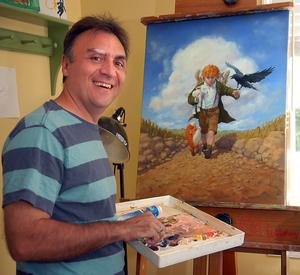 Chris’ work has graced the covers of classic books such as Jonathan Swift’s Gulliver’s Travels, Daniel DeFoe’s Robinson Crusoe, and Oscar Wilde’s The Selfish Giant, in addition to games, packaging, magazines, posters, private commissions and several other books.
Chris’ work has graced the covers of classic books such as Jonathan Swift’s Gulliver’s Travels, Daniel DeFoe’s Robinson Crusoe, and Oscar Wilde’s The Selfish Giant, in addition to games, packaging, magazines, posters, private commissions and several other books.
His clients include Simon and Schuster, MacMillan, Scholastic, Disney/Hyperion, Penguin, Nelson, Pearson, Weekly Reader, Bloomsbury Childrens Books, Walker Books for Young Readers, Gamewright Games, Lighthouse Creative, Kingfisher, VIA Group, Jerry Bruckheimer Games, Noteworthy Books, Smithsonian Magazine, Berkley and Fernleigh.
Chris’ work has been featured several times in Spectrum, Exposé, Exotique, Painter and Fantasy Art Now 2, receiving two awards for Excellence in Fantasy and another for Excellence in Humor.
His work has also appeared on display in the Lyceum Theater Gallery in San Diego, California, The Danforth Museum of Art in Framingham, Massachusetts, and The Gallery at Mount Ida College in Newton, MA.
Chris received his Bachelor of Fine Arts degree from Massachusetts College of Art in Boston, Massachusetts. He now lives in Natick, Massachusetts with his wife and daughter.
Here is Chris discussing his process:
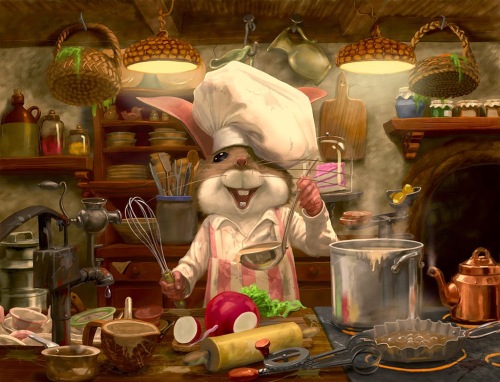
With a lot of pictures you don’t need (or want) to have detail all over the place. This can kill the focus, the epicness of the design… but for some pictures you need to have a lot of stuff at a pretty developed level of rendering.
There was a time not so long ago that putting together a picture like this would have been really daunting for me. If that’s true for you now, take heart! Onward!!! A lot of it is learning to go back and forth between the small stuff and the big stuff. The details and the design, so to speak.
PREPARATION
As usual I didn’t start this painting with a very detailed drawing. For ideas I looked at lots of different kitchens, historical and modern.
Here’s the initial rough:
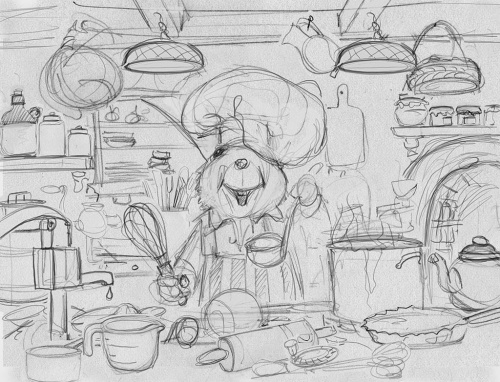
I scan that and clean it up in Photoshop:
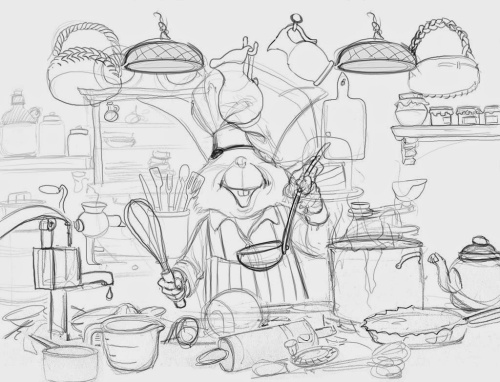
I don’t like having to draw something all nice and clean and detailed, and then also paint it afterward. I like to just have an idea of what I am going to paint, then paint it directly. Also once I start dealing with value and color I find that compositional issues change, and new opportunities emerge. With digital media I don’t need to do separate composition and value studies. I decide the basics of what I want to do, then set up my image specifically in a way that allows me to work these issues directly in the final picture, and create the final forms directly in the “paint” vs. with line. But I have to set up my image such that I can control and manipulate the different pieces as I go, which basically means putting them on different layers.
LAYERS
As far as organizing your layers, you really need to find what works for you. Don’t assume what works for me or your favorite artist will work for you. Having every single element on its own layer theoretically would make a lot of the painting process easier BUT for me it totally kills the spontaneity, which is absolutely critical for achieving creative flow, getting in the groove… you notice something, you go there and paint it. Fumbling through a huge layer stack is a drag!!!
So I group things into a few color coded layers. Using the lasso select tool I quickly trace each object, then fill with solid gray on a separate layer for each set of objects. I color the layer itself in the Layers panel, and I make a little color key, like this, that I keep open at all times. Each color corresponds to a single painting layer:
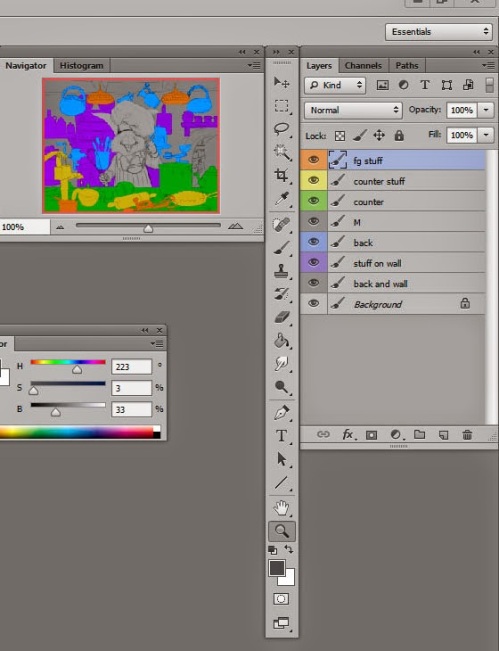
This allows me to navigate the layers panel really quickly. If I want to paint one of those baskets, I go to the blue layer in the panel. Rolling pin, that’s the yellow layer.
VALUE, VALUE, VALUE!
If I’ve told you kids once I’ve told you a thousand times – it’s all about value!! Please believe me!!!!!!!!!!!!!!!!!!!! Value organization is critical to a painting, both in terms of the abstract design and the believability of the space.
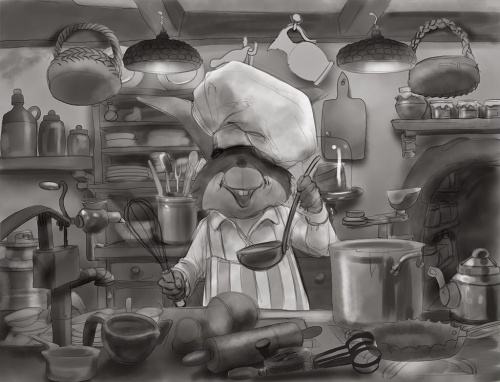
Even though my picture is already divided into layers, I do my value rough on a single layer, because it needs to be super-spontaneous and “big picture.” I need to be able to paint a big dark swath over there that subsumes all the stuff in it, without having to go back to a bunch of individual layers and try to mimic that global blob of darkness, for example. Once I have something going that looks solid, I duplicate that value layer, clip one clone (Create Clipping Mask) to each of the separate layers, and merge down. So it still looks the same as the single layer value painting, but it’s actually divided up into separate layers according to the color key.
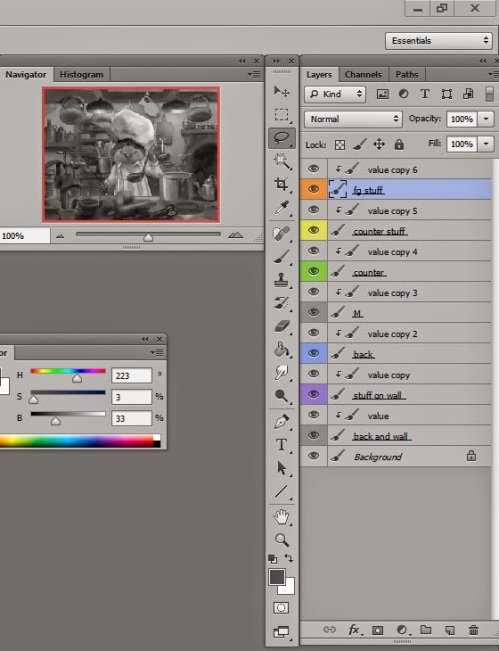
COLOR
Next I add color, using color layers and Hue/Saturation layers set to colorize. This ensures that the value structure is preserved. I don’t always divide the value rough and color rough into such clearly different steps, but for this picture it was an easy way to handle the large amount of content. I use a combination of individual color layers clipped to each separate painting layer, and “global” color layers at the top of the stack to affect the entire image.Look at how even at this very early stage, parts of the picture (like the jars at the left) are starting to look real and convincing, almost like a blurred photo (click for a detailed version). At this point I merge the color layers down to each individual painting layer so I’m back to having just a few painting layers. For the “global” color layers I first clone them (one for each painting layer), then merge them down.
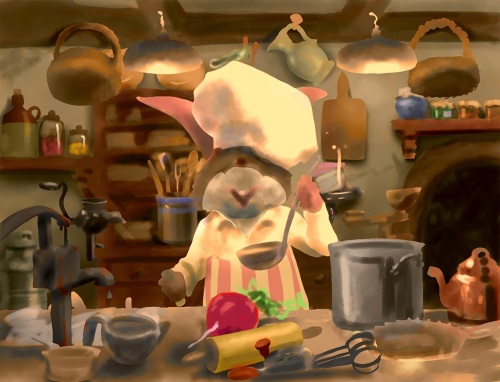
COMPLETE LIGHTING
It’s not arbitrary that I lay in the full range of values from specular highlight to deep reflected darkness on, say the teapot, right at the start. You will not create the illusion of a real environment if you don’t represent all aspects of the light in that environment. To put it literally, you need to have a white, a black, a red, a blue, etc. but also you might want to think about having a shiny thing, a not shiny thing, and so on. The only way we see light is by the things that reflect it… so if you want to have light, have different things reflecting it… that is, have things that reflect it differently. In this way the only common denominator is the light itself, and that’s what the viewer will see. That is how you paint light.
If I turn the drawing layer back on, which re-introduces some of the little occluded areas and dark accents, viewed small this almost looks like it could be a finished painting. The back wall, with its well placed shadows and organized value structure looks almost complete.
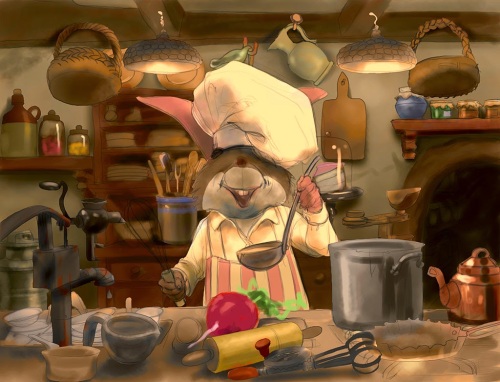
RENDERING THE DETAILS
Ok, that was the fun part… but seriously, I know if I had labored over a detailed drawing, that last thing I’d feel like doing is going back and redrawing those things in paint! But, with this process I’ve only spent a few hours on the picture at this point, and am psyched to buckle down and just render, knowing I have a really solid foundation in which to paint the individual elements.
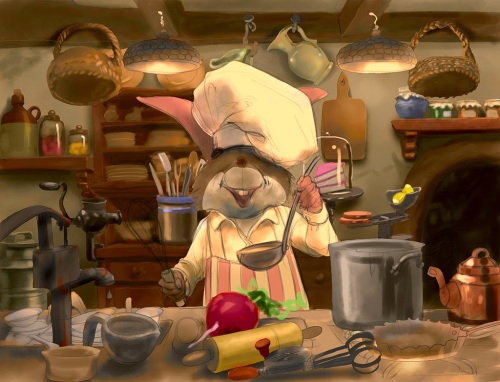
LOOK AT STUFF!
There is no greater thrill for me, nothing that is more pure fun than being able to paint a picture like this entirely from my head. That comes from spending a lot of time just looking at stuff. Studying everything I see to understand what makes it look the way it does. What makes something look shiny, wet, transparent, shiny and transparent, soft, hard, etc.
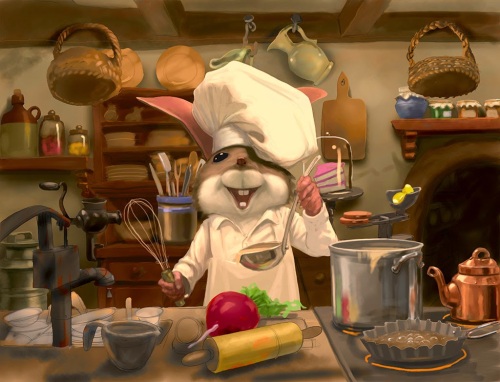
GETTING THE BIG PICTURE
Even though my design was solidly established, it’s impossible for it to be complete when the various elements are only roughed in. As I add detail I continually reassess how the picture is holding together, and look for new opportunities to improve the design. I do most of the painting at 25% or 33% zoom, so the whole picture fits on my monitor (usually). But I also keep Photoshop’s Navigator panel open at all times, so I can get some distance on the picture, like a thumbnail, without being distracted by details. This makes it really obvious when elements are not fitting into the overall design.
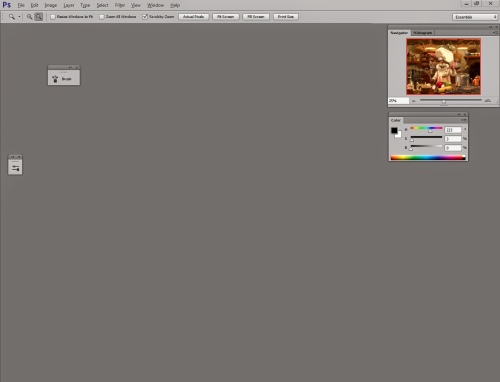
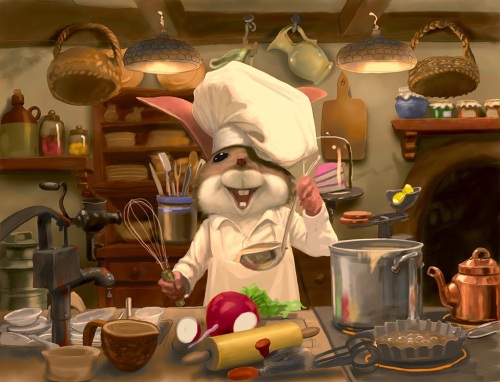
SWITCHING GEARS
When I work a picture like this it really feels like there are two entirely different processes going on, and I am switching back and forth between them every hour or so.
When I’m working on finishing a specific element, say, a cup or dish, I’m thinking more like a scientist, more objectively – how is the cup reflecting the different lights? Where does that highlight go? What color needs to be right here to pick up some of that light reflected back off the thing that’s next to it? What is the shape of that ellipse? and so on.

Alternately I am viewing the whole picture using just gut feel. Is my eye stuck over here for some reason? Why is that? Am I getting a red/green vibe in this area? Is this or that element separating from the picture, or pulling my eye? Are all the pieces working together to create the whole I want? Does the picture have the impact I want? I say this is “gut feel” because often the problem is not what it seems. To give a simple example, you may want the eye to be drawn to a certain spot, and in trying to make this happen you may only do things to that spot, when the real problem is that some other spot is pulling the viewer away. If you just keep staring at your desired focal point trying to figure out what’s wrong, you will never find it. You have to listen to those little voices in your head that hint something is going on over there…
So I work back and forth between tightening the painting in specific areas, and making comprehensive adjustments to the composition as those painted pieces start to emerge in detail.
THE BEST OF BOTH WORLDS
3d reality principles are not the same as 2d pictures principles. With realistic painting we need to balance the two as best we can. These two ways of viewing the picture can come into conflict, and generally the latter one wins. So for example if that perfectly placed highlight is stealing too much of the show, off it comes. It’s paradoxical, but a picture looks more “real” when you can get all the parts to fit together as a 2d composition, even if that means overruling some laws of 3d reality. I think it was John Singer Sargent who said, “paint the hand the way it looks when you are looking at the face.” Though in this picture I need to have everything pretty crisply rendered, the principle of getting the right simple gist of each element still applies.

DIGITAL POWER… AND PITFALLS
Being able to move and adjust things at any stage of the process and to make global or semi-global adjustments to a picture are obviously two of the key strengths of digital painting vs. traditional media – but this can be dangerous if you allow yourself to defer working out issues until too late in the process, or avoid committing to pictorial decisions due to endless experimentation. YOU NEED TO HAVE AN IDEA even as you remain completely open to new ideas and refinements as they present themselves.
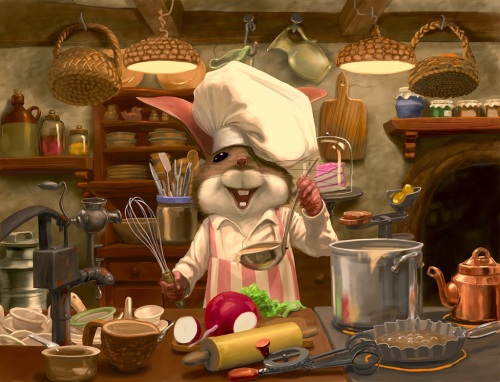
FINAL TWEAKS
At last I add details that sit over the main forms, such as the various splatterings and mess of the kitchen. And I do some big adjustments to the lighting, adding atmosphere to the lamps, and pulling the focus into the face a bit more.
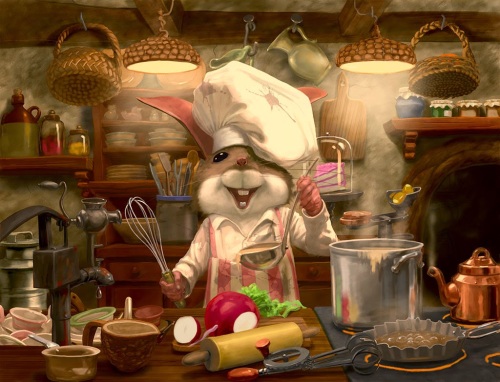
THE FINISHED PAINTING
A few more details, and there you go!
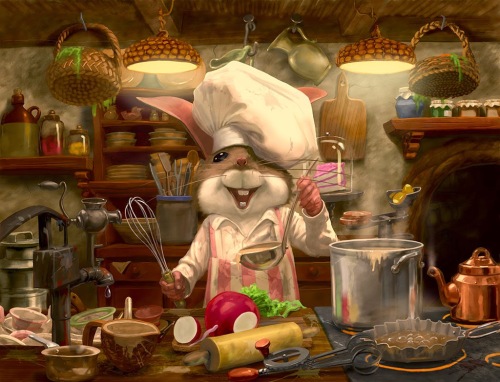
Time to go back to your own kitchens and see what you can cook up!
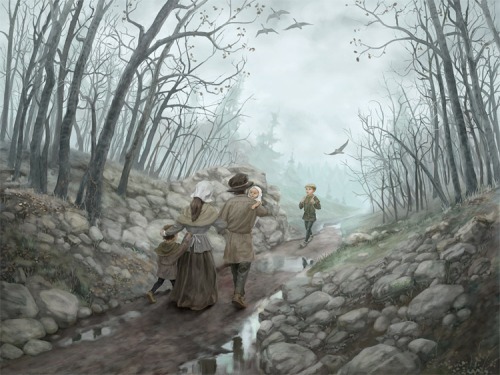
How long have you been illustrating?
Pretty much since I was a kid, though I didn’t think of it as “illustrating” back then. I went to a vocational high school where we were in the commercial art studio full time every other week, so that was probably when I first felt like a professional illustrator. We’d be given assignments with deadlines, various constraints and restrictions (size, medium, etc.). It was great training. I think I learned more there than in art school to be honest.
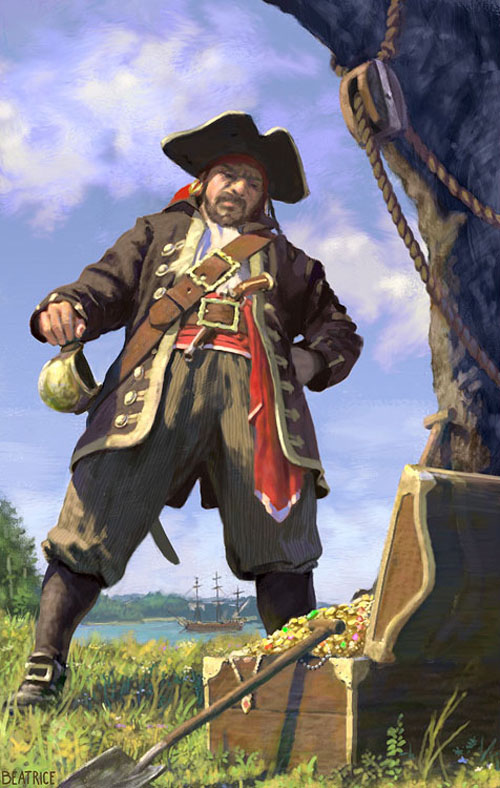
What was the first thing you painted where someone paid you for your work?
I think it was series of Christmas pieces I did for a smallish UK publisher in 2004 or so. But I should note that before becoming a professional illustrator I worked in games for a long time, doing 3d modeling and animation, not illustration.
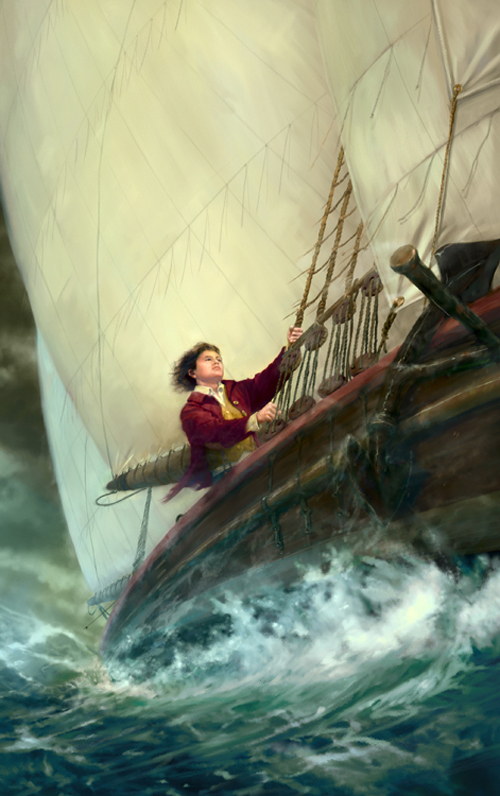
What made you decide to get your BFA from Massachusetts College of Art in Boston, Massachusetts?
Honestly a lot of it was the money! Mass Art is a great, great art school, but one of the things that makes it extra great is it’s a really good deal for the cost. Even though I was really into illustration through high school, I didn’t feel certain that that is what I wanted to do forever. At Mass Art I was able to explore a lot of different things.

What did you study there?
I actually majored in metals/jewelry/sculpture. I did no 2d work at all other than the kind of first year boot camp.
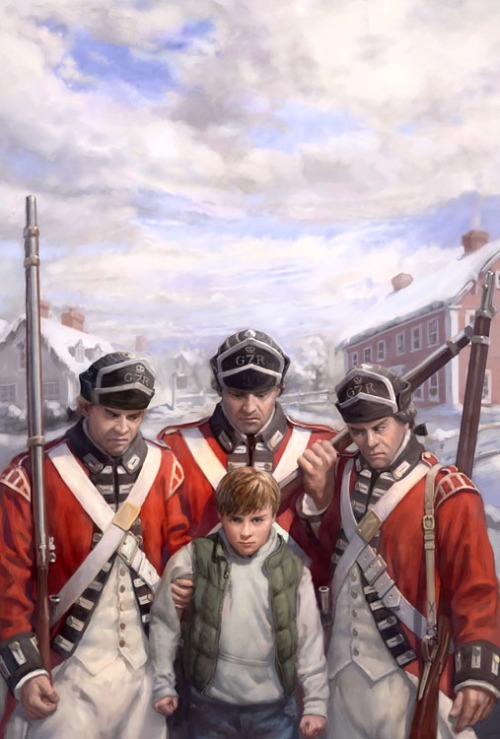
Do you feel College helped develop your style?
No, not really. My metalwork has a lot in common with my personal drawings, but not my illustration work.
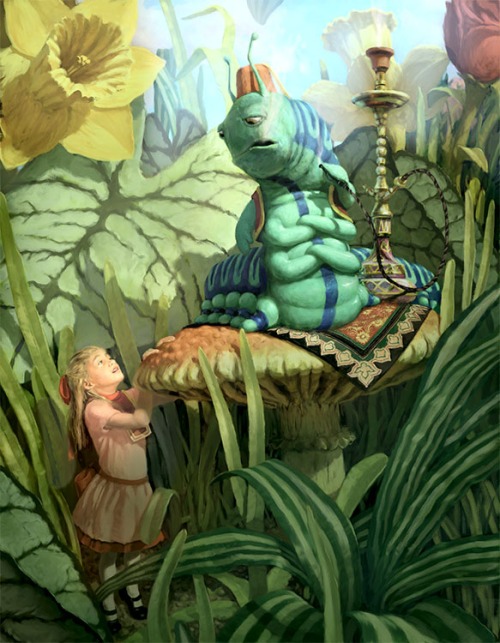
What type of work did you do after you got out of school?
After art school I sold my jewelry for a little while (very unsuccessfully), then went back to illustration, teaching myself. In hindsight I really wish I’d studied illustration somewhere, because I still feel like I am stumbling across basic stuff I would have learned had I majored in illustration in school.
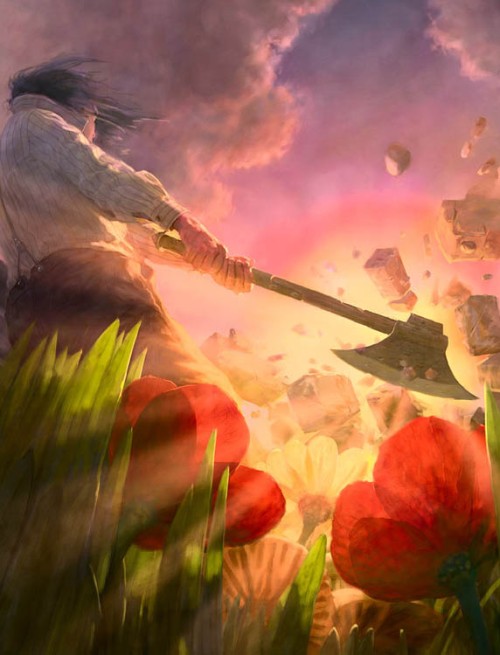
Did the college you attended help you get work when you graduated?
Actually yes. I got my first job in games from the Mass Art career placement office. That launched a long and very successful career for me in games, going from artist to art director to creative director, and ultimately CEO of my own large game studio (Tilted Mill Entertainment).
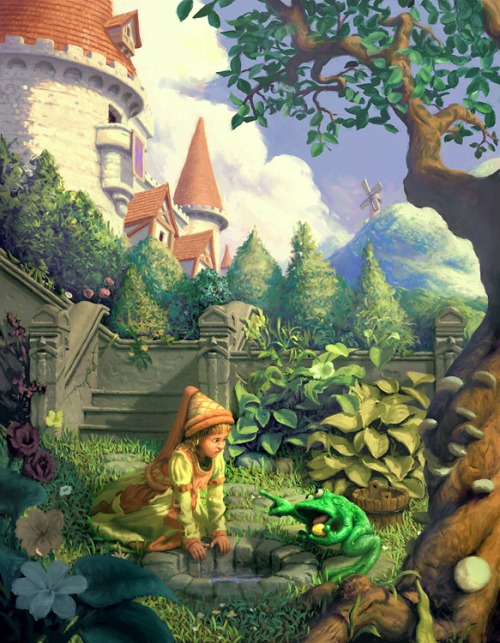
Have you seen your work change since you left school?
Yes, definitely. I am very conscious of what I am doing with my work thematically, technically, formally, etc. I analyze it constantly and look to improve. I embark on very detailed and in depth (and grueling) training schemes to improve my work. For example, a few years ago my frustration with anatomy reached a boiling point, so I set up a plan to really learn it. I don’t think most students really learn anatomy in art school. They study it, they draw from the model, blah blah, then they still can’t draw a figure from imagination. Many can, but I think most can’t. The trouble is your main tool to learn anatomy is drawing, but in school most students can’t draw very well yet. In life drawing class you’re learning drawing more than anatomy. So I came with my own method to really learn anatomy, and it worked great. I’ve done similar things with color, light, composition, value, etc.
A lot of artists find success then kind of stagnate. They keep doing the same thing. That’s fine, but not for me.
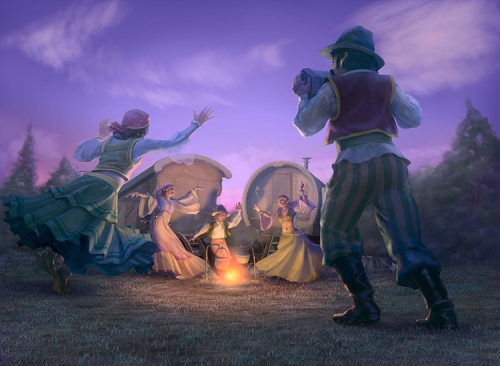
When did you decide you wanted to illustrate for children?
It’s weird because I kind of didn’t notice that’s what I really liked doing. I kind of assumed I’d be a fantasy artist. Then I’d get a range of different commissions, and the ones I was always most passionate about where the kids’ stuff.
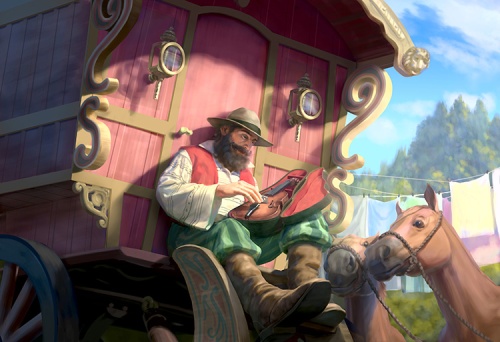
What was your first book you illustrated?
Aesop’s Fables (a pop-up book) for Simon and Schuster.
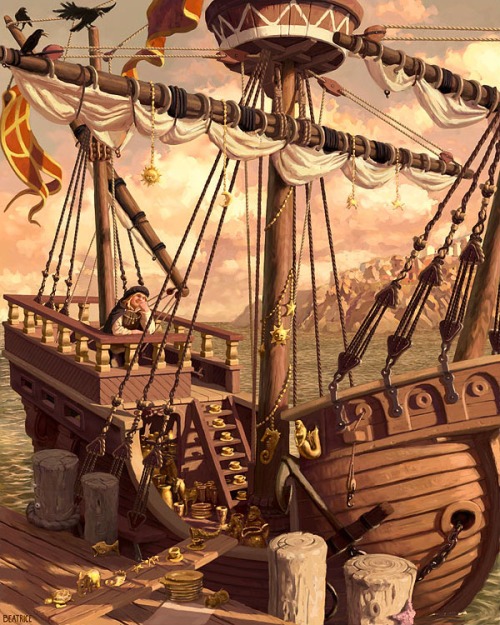
How did that contract come about?
I spent a couple of years building up a small but pretty solid portfolio, then when I decided to pursue illustration full time in 2009 I signed up with Shannon Associates (an agency). I got the project through them.
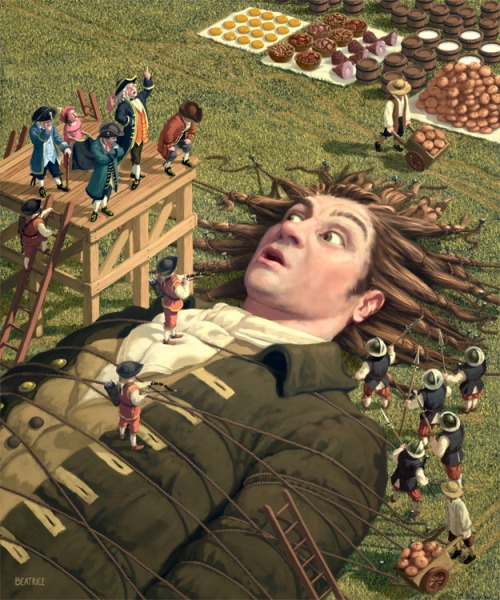
Did you do other types of illustrating before you got that book contract?
A few things here and there while working full time++ in games. I did some covers for Penguin, and a few kids’ things. I couldn’t really accommodate much more with my real job at the time.
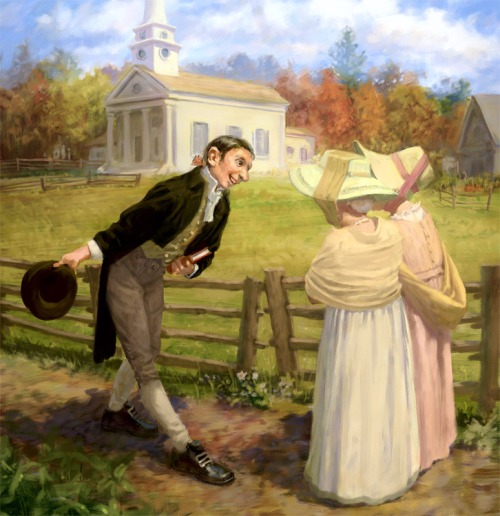
How many picture books have you illustrated?
I count 15 full books, but I do a ton of other things as well. Last year I did a card game (Dragonwood), including the box cover. I do a lot of book covers and some editorial stuff as well, plus visual development work.
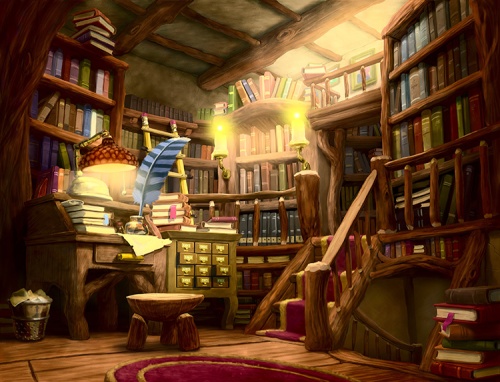
Have you ever written and illustrated you own picture book?
No but I do have a script for a graphic novel cooking along.
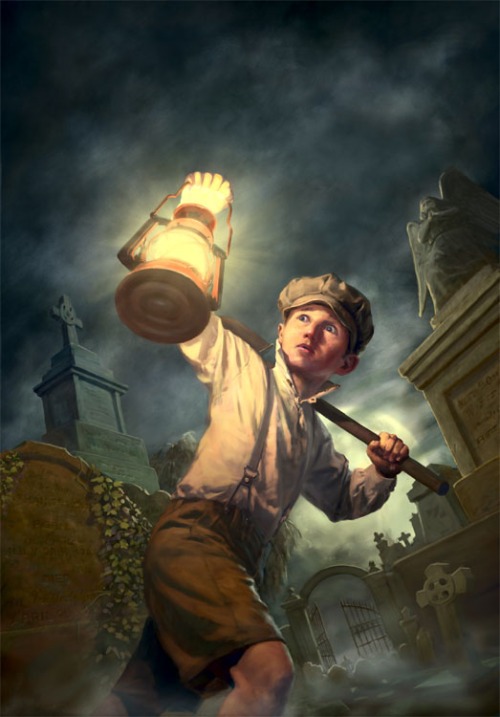
What book do you think was your biggest success?
Artistically I am partial to Swamp Things, The Dark and the later Maurice books. I have done so much art for Maurice that that character is part of me.
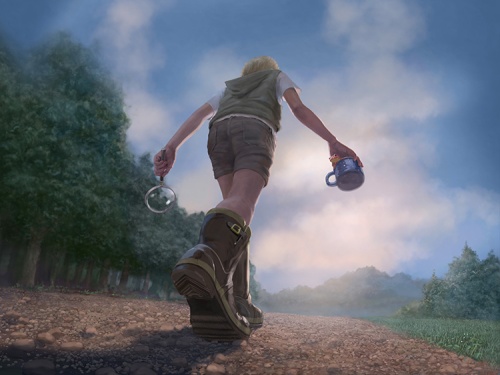
Have you ever thought about doing a wordless picture book?
Sure, yeah, but I need to find a much simpler “style” for that to work out. That is the challenge for me. I like finishing things with lots of detail and light.
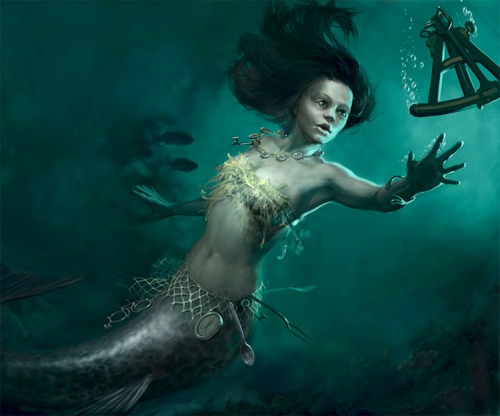
Do you have an artist rep? If so, who and how did you connect?
I haven’t for a long time. I was with Shannon for less than a year. I found them the way I find everything – a huge exhaustive search and comparison process, starting with hundreds and whittling it down to a few.
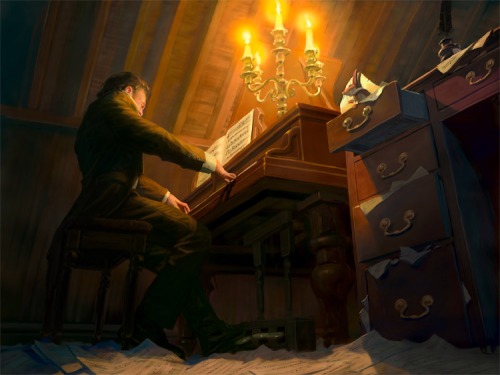
Can you tell us about receiving the award for Excellence in Fantasy and other you won for Excellence in Humor? Did you submit enter some illustrations to win?
That’s right. For the Ballistic books and others like Spectrum you submit illustrations and the winners are chosen by a jury.
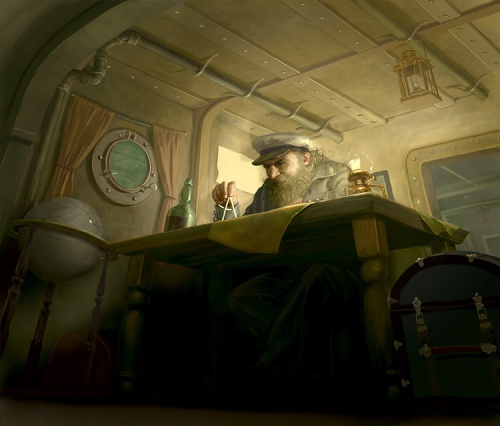
Do you illustrate full time?
Yeah, and by “full” I mean all the time, every day. Seriously it is an all-encompassing profession. I always have a very full plate, normally I’m booked up months or even a year in advance. And then someone contacts me and I squeeze them in. We’re working on having a coffee station installed in the studio this year.
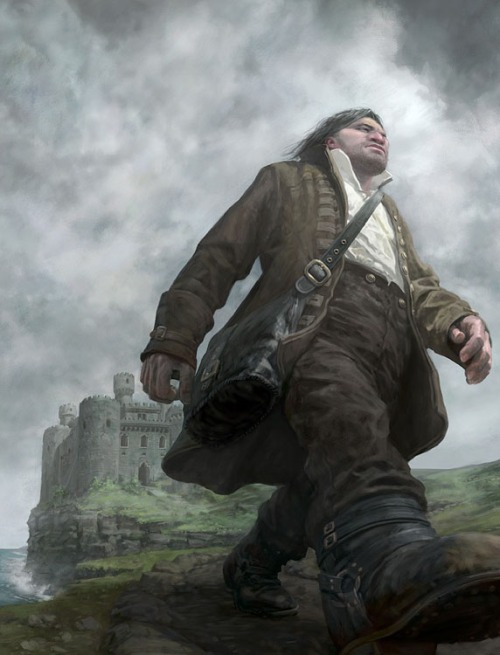
Do you have a favorite medium you use?
I love drawing in regular old pencil, and I love painting in oil. But most of my professional work now is done digitally. It’s just more efficient for me. Though I really miss the physicality of real paint.
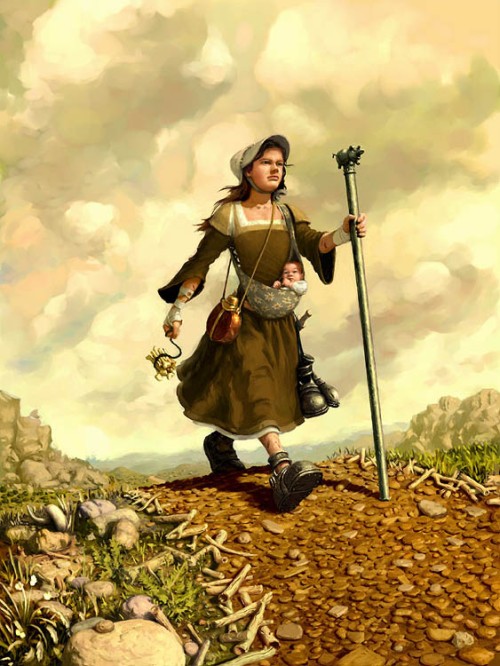
Do you take research pictures before you start a project?
Yes, lots and lots. Over the past year I have really been upping my game as far as prep (another one of those projects I give myself to improve). Even though it can slow the process down and make it a lot less fun (much more fun to just sit down and draw from your imagination) I realized that for what I wanted to do a little more research and prep was needed. It’s hard for me to defer the gratification, doing studies, planning out the composition, etc., but the improvement in the final work makes it worth it.
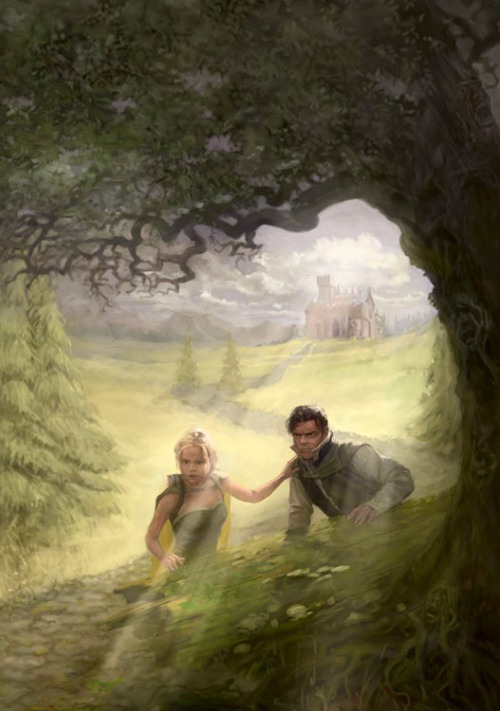
Do you use Photoshop with any of your work?
Yes, that’s mostly what I use now. I hate it, but it’s a necessary evil for me. I greatly prefer the brush engine of Corel Painter, not because it mimics real media but because I can set up my tools such that I can do a lot with just my hands (pressure, rotation, etc.). Photoshop’s painting tools work very differently. You have to think differently to exploit them. But Photoshop has some more powerful tools that make my life a lot easier. For a while I was doing my painting in Painter, then certain editing in Photoshop, back and forth all the time. That got unwieldy so I forced myself to come up with a way to make Photoshop’s painting tools work for me. Lately I have been painting more on a single layer so I may go back to Painter.
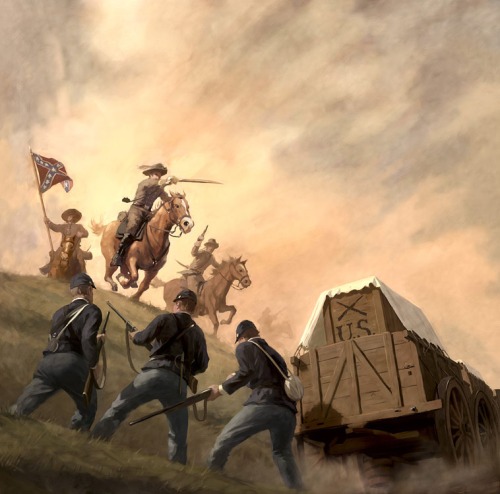
Do you have and use a graphic tablet?
I use a Cintiq pen display (i.e. a tablet monitor). This allows me to paint right on the screen, at a near vertical angle (like an easel) and fairly large. I still miss the precision and incredible versatility of physical mark-making tools though.
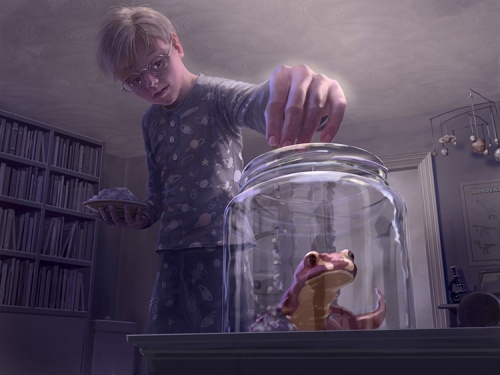
Do you do exhibits to show off your art?
Here and there. I don’t submit to any of the annuals anymore. I personally get little benefit from being in them. I have done a few gallery shows when they come along.
Would you be willing to work with a self-publisher picture book writer on a project?
Absolutely – I do a lot of those actually. Self-publishing has been great for me. I hear a lot of my peers poo pooing self-publishers, but I’m not sure why. When I was with Shannon (my first real taste of the professional publishing world) they didn’t treat one client or job as better than another based on whether it was a big publisher vs. a single person. I don’t either. In fact some of my most rewarding work (financially and artistically) has been with independent clients. I really love being able to work directly with the author, and not having the process be consensus-based, as is often the case with bigger publishers.
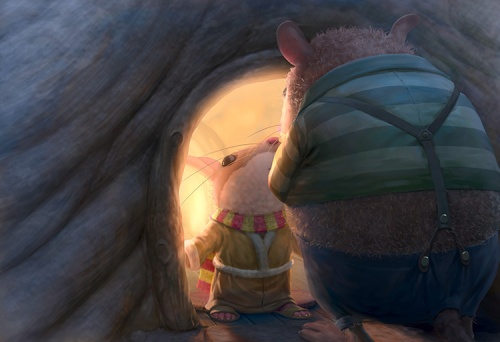
Has any of your work appeared in magazines?
Yes, I have done pieces for Smithsonian Magazine, READ, Harvard Magazine, The Weekly Standard, probably others I am forgetting.
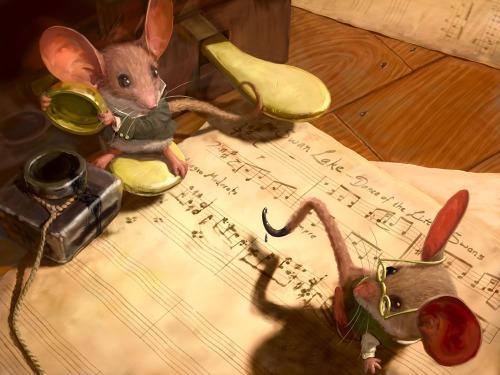
Do you have a studio in your house?
Sure do, and now my daughter works in there with me as well.
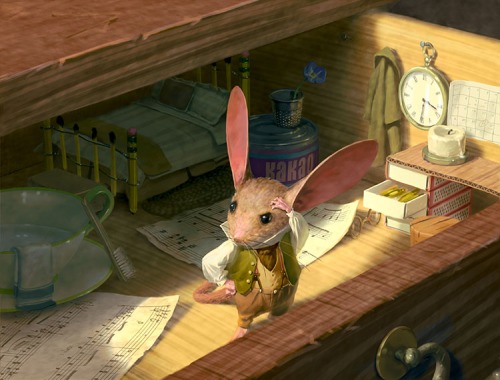
Is there anything in your studio, other than paint and brushes that you couldn’t live without?
Oh there is quite a lot in there I need. We have a props department and a wardrobe department… two 2d systems plus a 3d system. One drawing table… a huge collection of reference books (costumes, historical stuff, everything – it’s surprising how much you still need to use books vs. Google for certain things). We have a studio guitar… a tv, plus lots of inspiring decorations.
But when I travel, even for a short time, all I need is my Cintiq Companion. It’s a portable digital drawing tablet, sort of like an ipad but with a much more robust pen input, and Photoshop. I also carry a pocket sketchbook with me at all times, which is pretty much where all my good ideas come from.
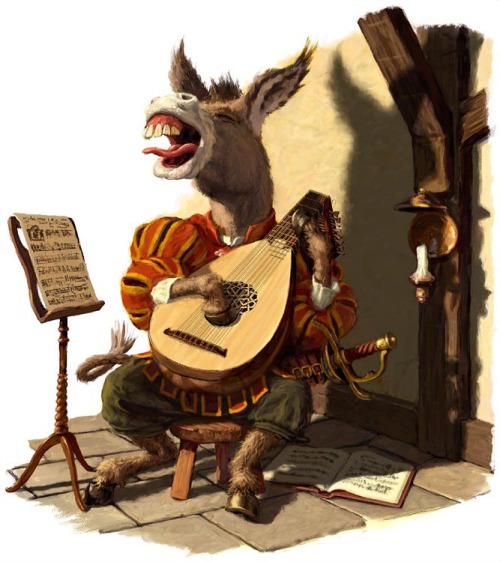
I saw a picture of you holding a cello. Are you also an accomplished musician?
Well, I play cello and guitar. Let’s leave it at that. [Symbol]

Do you follow any type of routine to attain your career goals?
Yes, I am very disciplined as far as how I run the studio, probably to a fault. I’ve created several tools to allow me to plan and track projects. When I started out, part of this was getting a sense for how long different things would take. Now that I have a good grasp of that I am able to confidently map out my schedule, fitting all the projects and deadlines together so I am constantly busy. I use different formulas to determine what I need to charge for a given project to make it worth it, and so on. I stick to my schedule, again, maybe to a fault. But it’s worked for me so far. If you want to be able to do this full time (and are not being supported by someone else) you need to run the studio like a business (at least the business side of thing needs to be run like a business).

Any exciting projects on the horizon?
Oh yes, and I really wish I could talk about it. Let’s just say it looks like Maurice is going places.
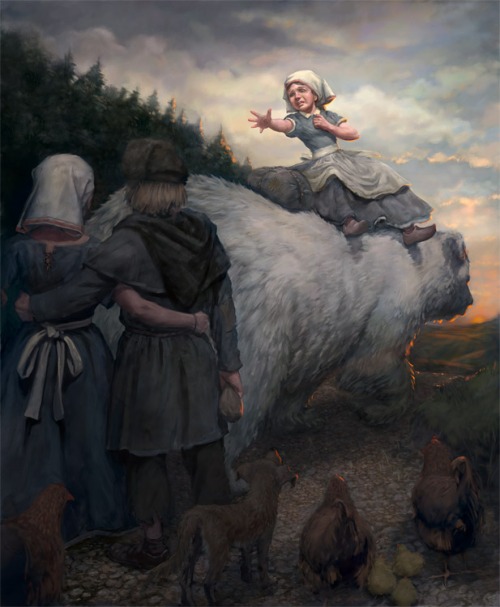
Do you think the Internet has opened any doors for you?
Yes, but it’s a double edge sword so I’m not sure if it’s been a net gain for me personally. On the one hand it’s really great that I can put my portfolio out there and get clients with fairly little effort. On the other hand, so can everyone else, including artists on the other side of the globe. A couple of decades ago I would have had to assemble my physical portfolio and head off to New York to show it to Art Directors. I’m glad I don’t have to do that… but since I live in New England this would have been much less of a hassle for me than for most artists, so I probably would have had an advantage in terms of networking. Now the creative industries are much more democratized. I can’t complain, because fair is fair. It’s better that it’s merit-based. I’m just saying for me personally I might have been better off the other way. Who knows.
To answer the question simply: pretty much all my clients have found me via the internet, so yeah!
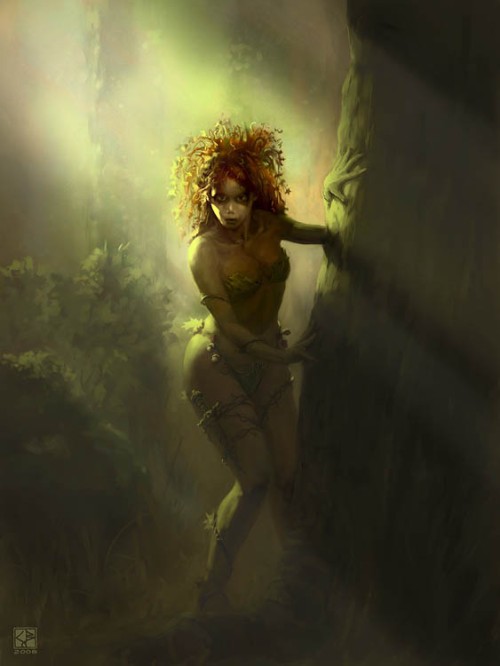
What are your career goals?
I am only now realizing that I’ve kind of hit them, so what’s next for me is probably doing my own thing, whether that’s a picture book or graphic novel I’m not sure. I have been developing my own characters and have a solid script now. I call it a script but for all I know it’s an outline for a novel. I am also very eager to teach. Developing my work has been a huge effort and struggle for me, and I want to share what I’ve learned. I know a lot of really amazing artists who are not great teachers, because they don’t fully understand what they themselves do! That’s not uncommon with really gifted people. For me, though, the process has been much more analytical and learned. So I can articulate exactly how I do what I do.
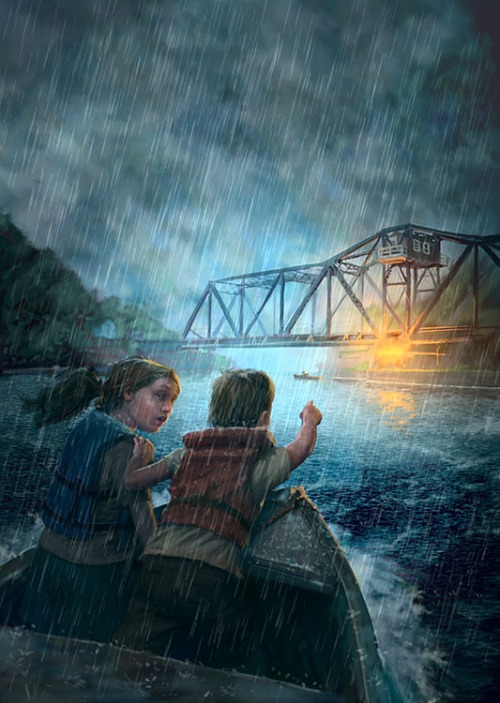
What are you working on now?
The usual – a couple of y/a covers I’m really thrilled with, plus the latest in the Maurice series.
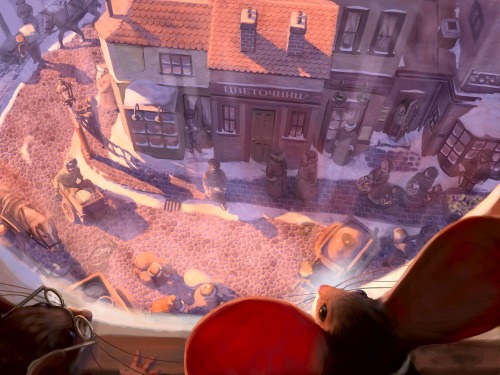
Are there any painting tips (materials, paper, etc.) you can share that work well for you? Technique tips?
Some artists rely heavily on visual reference, others work solely from imagination. There’s nothing wrong with either approach – you can produce great art both ways. The important question is whether or not you are currently using reference in the way that’s best for your art and your artistic development. Depending on where you are you may benefit from learning to use reference more, learning to use it less, or learning to use it differently.
If you want to expand your ref-less capabilities, here are two exercises to consider:
1) Force yourself to create an image solely from imagination. Do not give up when the going gets tough, but think, think, think about what you are trying to draw and paint, what its form is like, what that form would look like under the given conditions, etc. When you are away from the image, keep your eyes open for the answers to those nagging questions you couldn’t get right – everything from color to anatomy to form and space. Working without reference makes the gaps in your abilities crystal clear, and may be disappointing, even embarrassing. THAT’S A GOOD THING. In fact, as a side note, anytime you look at your work and think “that looks horrible” count yourself lucky that you can see it. The alternative is much worse.
Anyway, back to working without ref – even though you may see some real weaknesses in your ability to depict certain things, at the same time you may find your work has a certain power and personality that was lacking before, and this only improves with practice. When you have to figure out visual things in your own head you understand them in a way that is much deeper, more profound, powerful and personal, and this is reflected in the artwork. Once you’ve given it your all, I mean really gone to the wall, then you can go obtain some reference material and use it to “fix” or simply check your work. You will likely never forget the answers to the particular questions you struggled with in that picture, whereas you’d used reference from the start it would have been in one ear (or eye) and out the other.
2) Create a painting from imagination, and obtain reference material by sketching only, whether from life or photos. It’s better to draw from life because we tend to empathize and identify with our subject more fully and physically when it or he or she is a real thing. Art-making is not just in the eyes, it’s in the body.
Then use the sketches as your reference for the painting. Don’t look at the actual subject or photos while painting, just look at your sketches.f
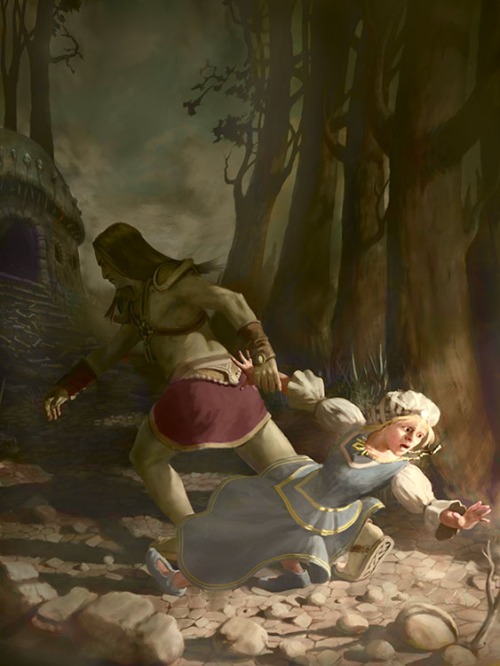
Any words of wisdom you can share with the illustrators who are trying to develop their career?
Ok, you asked for it…
First, work on your work. The thing about 2d visual still art is it takes a viewer a split second to react to a piece. Music takes a few seconds, movies take many minutes, books take hours. But a painting takes .0001 seconds. All those hours you put into that piece come down to .0001 seconds of whether the viewer is grabbed and is going to keep looking. You are judged in the blink of an eye. And what happens in second 2 and 3 matters as well. You don’t want a “wow… oh, ugh” reaction either. So make your effort count. Your portfolio is you. That’s really hard, but it’s the truth. Your art is a perfect encapsulation of you at that moment. Look at it. Really look at it. A lot of artists post work on social media and there is always a disclaimer like “just a sketch” or “ten minutes” or whatever. The work speaks for itself. That’s what visual art is. You can’t change it with words, a long resume, etc. (continue)
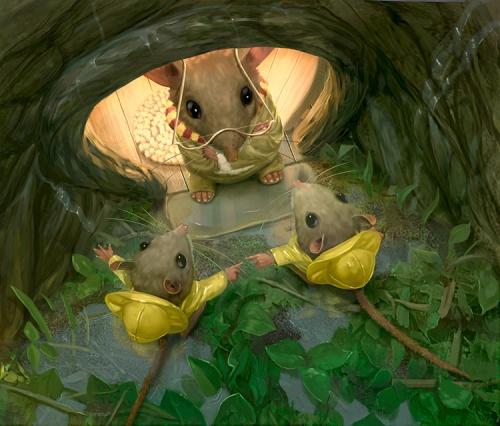
Second, don’t try to be everyone. A lot of artists think, “it’d be cool if I could do x and y and z.” That’s natural because we each like wide varieties of things. Some of those likes inform your work a lot, but some don’t. They’re just things that you like, as a viewer, so to speak. You love Indian food but you don’t necessarily want to learn to cook it. It’s critical to be able to see the difference, so you don’t waste time developing skills that are not going to help your work. There is only so much you can do, but even if you had infinite time you’d find that many of those pursuits are really not satisfying at all. Really they are the result of insecurity (“I think I should be able to do x like so and so, that’s really impressive…”). For an artist there is a huge difference between “I think I should” and “I really want.” (continued)
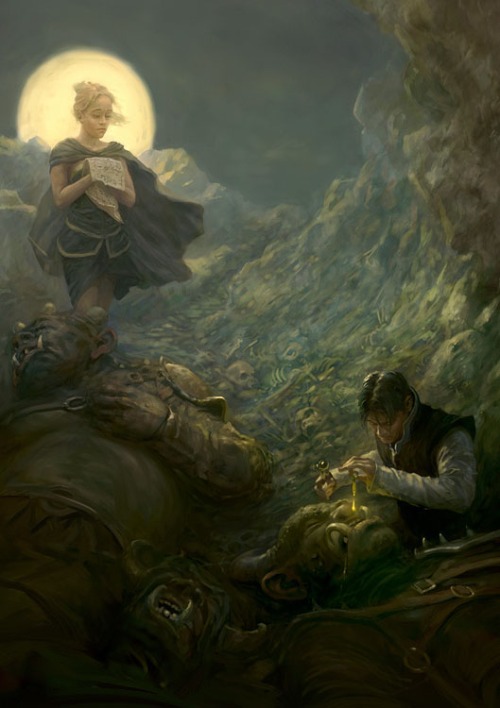
Third, respect your work or no one else will. I hate when I see veteran artists telling beginners they should take any job, even work for free, because “that’s what I did.” Maybe that is what they did, but one result is that artwork is much less valued than it used to be. It’s fine to negotiate fees, it’s fine to work for much less than you’d like because this particular job has other value to you. But you need to do that without ever losing confidence in your work, without ever believing that your work has less value. (continue)
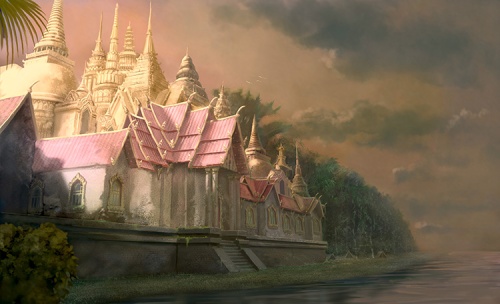
Four, try to maintain some level of discipline. This is both hugely challenging, and hugely helpful for a freelance artist. As a freelancer you are pretty much always working alone. If you decide to take a walk or spend four hours at lunch, no one is going to know. Most artists tend to slack a little until the deadline is looming, then go into overdrive when the time gets tight. So their deadlines become their schedule. How much more likely is this when there is no formal deadline, only a personal goal, like updating your online portfolio or sending out mailers? So make your own schedule, and treat is as seriously as if someone else (e.g. your “boss”) made it (sounds funny, right? Why should you take someone else’s schedule more seriously?).
I could go on but this answer is getting pretty long…
I will say the hardest struggle for me personally has been finding the balance between healthy self-criticism of my work and respecting it and valuing it for what it is.
Thank you so much for the opportunity to share my work and my thoughts.
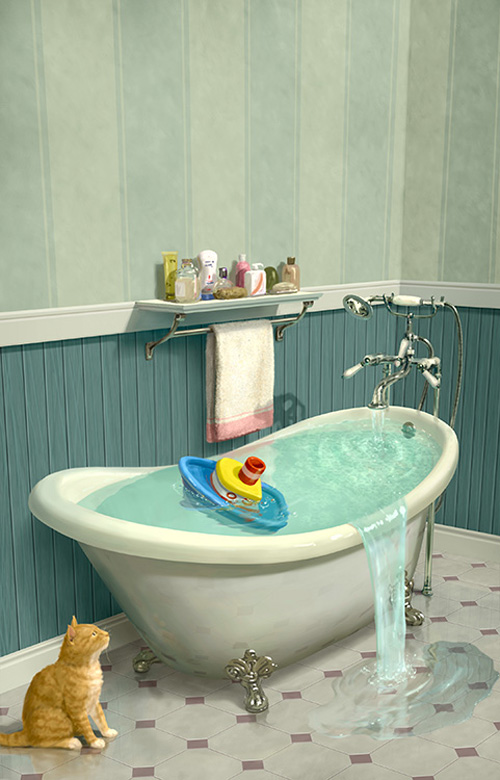
Thank you Chris for sharing your talent, process, journey, and expertise with us. Please make sure you keep in touch and share your future successes with us. To see more of Chris’ work, you can visit him at website at: http://www.chrisbeatrice.com
If you have a minute, please leave a comment for Chris. I am sure he’d love it and I enjoy reading them, too. Thanks!
Talk tomorrow,
Kathy
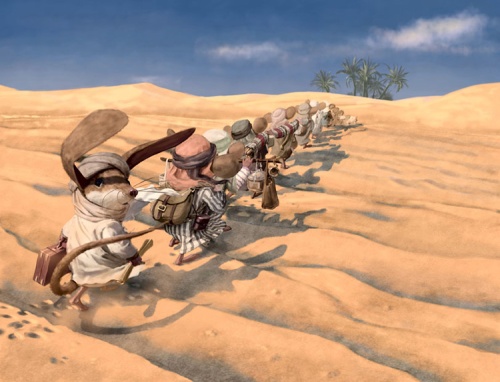
Great!!. I’ve really liked it and I’ve learned a lot. Thanks a lot!!
LikeLike
By: Lola Azul on January 23, 2016
at 3:17 am
Those are pictures are truly amazing!
LikeLike
By: valeriawicker on January 23, 2016
at 8:04 am
Great Interview!!
LikeLike
By: johannabf on January 23, 2016
at 10:37 am
Wonderful art, Chris! Thank you for sharing!
LikeLike
By: tphumiruk on January 23, 2016
at 11:01 am
One of my favorite illustrators.
LikeLike
By: elenacaravela on January 23, 2016
at 11:19 am
As I scrolled down each new image impressed me more! Wow!
LikeLike
By: Cathy Ballou Mealey on January 23, 2016
at 11:39 am
wonderful emotive artwork! and good teaching points for all. very impressive….
LikeLike
By: catugeau on January 23, 2016
at 3:20 pm
Your work is luminous and inspiring. And thanks for your well-considered words of advice.
LikeLike
By: Sylvia Liu on January 23, 2016
at 3:42 pm
This interview is the most inspiring I’ve read so far, and the rest have been amazing! I am self taught. I did not get the chance to attend art school, and that has been intimidating because I am lacking in the computer skills that could save me time and the insider networking information that art school graduates have. Because of your site, Kathy, and great pros like Chris, I have access to an education that I have always wished I had. There has never been a better time to be self- taught! The best things in this article were his advice on the balance of references and imagination, which I am currently honing to get to my best style, and his digital drawing process. Chris, I hope you do teach because I can understand you! LOL I just discovered Skillshare and learning how to use Photoshop is my first goal. If you were an instructor on there I would definitely pick you out from the others because everything you discussed is what I want to learn (developing proportions in the composition, value study, sizing the painting). I guess I have a fear of picking the wrong instructor that is not teaching what I want to learn. Thanks again, Kathy and Chris
LikeLike
By: Lyn Meredith on January 24, 2016
at 2:27 pm
Impressive art and teaching skills. Loved this!
LikeLike
By: Tracy Campbell on January 24, 2016
at 7:00 pm